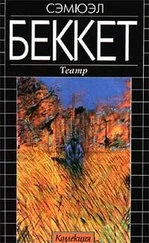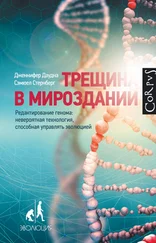C. Zimmer, A Planet of Viruses. Chicago: University of Chicago Press, 2011. Книга переведена на русский: Карл Циммер. Планета вирусов / Пер. А. Рангулова. Ростов-на-Дону: Феникс, 2012.
G. Naik, “To Fight Growing Threat from Germs, Scientists Try Old-fashioned Killer”, Wall Street Journal , January 22, 2016.
G. P. C. Salmond and P. C. Fineran, “A Century of the Phage: Past, Present and Future”, Nature Reviews Microbiology 13 (2015): 777–786.
F. Rohwer et al., Life in Our Phage World (San Diego: Wholon, 2014).
Даудна, вероятнее всего, описывает строение фага лямбда, геном которого представлен молекулой ДНК. Однако бактериофаги вместо ДНК могут содержать и РНК, что в тексте не указано.
S. J. Labrie, J. E. Samson, and S. Moineau, “Bacteriophage Resistance Mechanisms”, Nature Reviews Microbiology 8 (2010): 317–327.
R. Jansen et al., “Identification of Genes That Are Associated with DNA Repeats in Prokaryotes”, Molecular Microbiology 43 (2002): 1565–1575.
Y. Ishino et al., “Nucleotide Sequence of the Iap Gene, Responsible for Alkaline Phosphatase Isozyme Conversion in Escherichia coli , and Identification of the Gene Product”, Journal of Bacteriology 169 (1987): 5429–5433.
R. Barrangou et al., “CRISPR Provides Acquired Resistance Against Viruses in Prokaryotes”, Science 315 (2007): 1709–1712.
A. Bolotin et al., “Complete Sequence and Comparative Genome Analysis of the Dairy Bacterium Streptococcus thermophilus ”, Nature Biotechnology 22 (2004): 1554–1558.
M. B. MarcÓ, S. Moineau, and A. Quiberoni, “Bacteriophages and Dairy Fermentations”, Bacteriophage 2 (2012): 149–158.
S. J. J. Brouns et al., “Small CRISPR RNAs Guide Antiviral Defense in Prokaryotes”, Science 321 (2008): 960–964.
T.-H. Tang et al., “Identification of Novel Non-Coding RNAs as Potential Antisense Regulators in the Archaeon Sulfolobus solfataricus ”, Molecular Microbiology 55 (2005): 469–481.
Но это происходит гораздо реже, чем в случае ДНК, из-за разницы в сахарах. В каждом нуклеотиде РНК содержится сахар рибоза, и у нее по сравнению с дезоксирибозой ДНК один атом кислорода “лишний”. Именно он затрудняет образование двойных спиралей РНК.
L. A. Marraffini and E. J. Sontheimer, “CRISPR Interference Limits Horizontal Gene Transfer in Staphylococci by Targeting DNA”, Science 322 (2008): 1843–1845.
B. Wiedenheft et al., “Structural Basis for DNase Activity of a Conserved Protein Implicated in CRISPR-Mediated Genome Defense”, Structure 17 (2009): 904–912.
R. E. Haurwitz et al., “Sequence- and Structure-Specific RNA Processing by a CRISPR Endonuclease”, Science 329 (2010): 1355–1358.
J. E. Garneau et al., “The CRISPR/Cas Bacterial Immune System Cleaves Bacteriophage and Plasmid DNA”, Nature 468 (2010): 67–71.
R. Sapranauskas et al., “The Streptococcus thermophilus CRISPR/Cas System Provides Immunity in Escherichia coli”, Nucleic Acids Research 39 (2011): 9275–9282.
B. Wiedenheft et al., “Structures of the RNA-Guided Surveillance Complex from a Bacterial Immune System”, Nature 477 (2011): 486–489.
T. Sinkunas et al., “In Vitro Reconstitution of Cascade-Mediated CRISPR Immunity in Streptococcus thermophilus”, EMBO Journal 32 (2013): 385–394.
D. H. Haft et al., “A Guild of 45 CRISPR-Associated (Cas) Protein Families and Multiple CRISPR/Cas Subtypes Exist in Prokaryotic Genomes”, PLoS Computational Biology 1 (2005): e60.
K. S. Makarova et al., “Evolution and Classification of the CRISPR-Cas Systems”, Nature Reviews Microbiology 9 (2011): 467–477.
K. S. Makarova et al., “An Updated Evolutionary Classification of CRISPR-Cas Systems”, Nature Reviews Microbiology 13 (2015): 722–736; S. Shmakov et al., “Discovery and functional Characterization of Diverse Class 2 CRISPR-Cas Systems”, Molecular Cell 60 (2015): 385–397.
E. Deltcheva et al., “CRISPR RNA Maturation by Trans-Encoded Small RNA and Host Factor RNase III”, Nature 471 (2011): 602–607.
A. P. Ralph and J. R. Carapetis, “Group A Streptococcal Diseases and Their Global Burden”, Current Topics in Microbiology and Immunology 368 (2013): 1–27.
M. Jinek et al., “A Programmable Dual-RNA-Guided DNA Endonuclease in Adaptive Bacterial Immunity”, Science 337 (2012): 816–821.
G. Gasiunas et al., “Cas9-crRNA Ribonucleoprotein Complex Mediates Specific DNA Cleavage for Adaptive Immunity in Bacteria”, Proceedings of the National Academy of Sciences of the United States of America 109 (2012): 86.
То есть приближен по структуре к генам человека.
То есть атакующей ту же мишень.
L. Cong et al., “Multiplex Genome Engineering Using CRISPR/Cas Systems”, Science 339 (2013): 819–823; P. Mali et al., “RNA-guided Human Genome Engineering via Cas9”, Science 339 (2013): 823–826; M. Jinek et al., “RNA-programmed Genome Editing in Human Cells”, eLife 2 (2013): e00471; W. Y. Hwang et al., “Efficient Genome Editing in Zebrafish Using a CRISPR-Cas System”, Nature Biotechnology 31 (2013): 227–229; S. W. Cho, S. Kim, J. M. Kim and J.-S. Kim, “Targeted Genome Engineering in Human Cells with the Cas9 RNA-guided Endonuclease”, Nature Biotechnology 31 (2013): 230–232; W. Jiang et al., “RNA-guided Editing of Bacterial Genomes Using CRISPR-Cas Systems”, Nature Biotechnology 31 (2013): 233–239.
H. Wang et al., “One-Step Generation of Mice Carrying Mutations in Multiple Genes by CRISPR/Cas-Mediated Genome Engineering”, Cell 153 (2013): 910–918.
Скрещивание потомков с представителями родительского поколения.
Это лишь основные, существует еще несколько аминокислот, кодируемых мРНК у различных организмов.
Читать дальше
![Сэмюел Стернберг Трещина в мироздании [litres] обложка книги](/books/407192/semyuel-sternberg-trechina-v-mirozdanii-litres-cover.webp)





![Григорий Кузнецов - Руны. Ключи к энергии мироздания [litres]](/books/385550/grigorij-kuznecov-runy-klyuchi-k-energii-mirozdaniya-thumb.webp)
![Сэмюел Сайкс - Семь клинков во мраке [litres]](/books/386145/semyuel-sajks-sem-klinkov-vo-mrake-litres-thumb.webp)
![Кае де Клиари - Трещина [СИ]](/books/398531/kae-de-kliari-trechina-si-thumb.webp)
![Сэмюел Сайкс - Десять железных стрел [litres]](/books/431168/semyuel-sajks-desyat-zheleznyh-strel-litres-thumb.webp)

